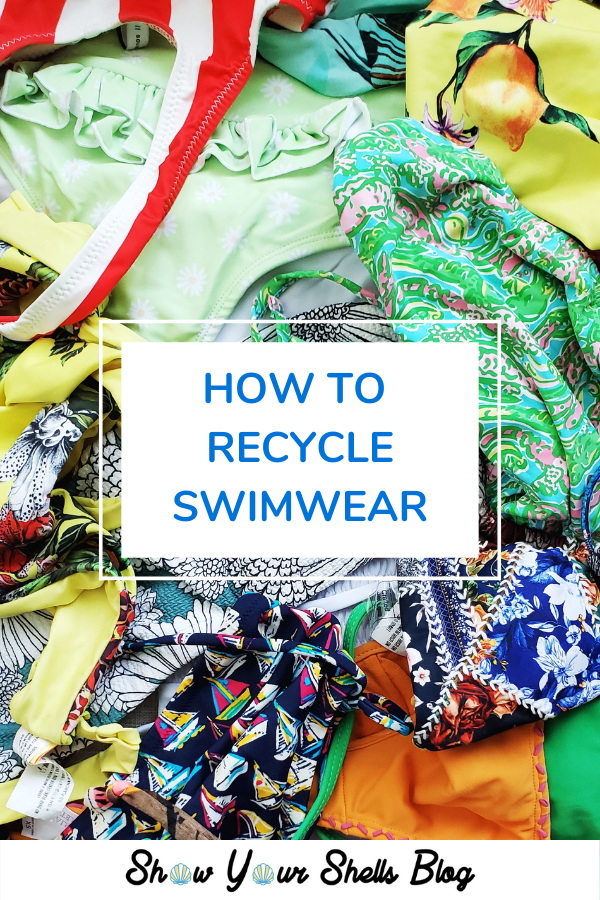Content Menu
● Introduction
● What Makes Swimwear Difficult to Recycle?
● Why Recycling Swimwear Matters
>> Environmental Impact
>> Social Responsibility
● How to Recycle Swimwear: Step-by-Step
>> 1. Assess the Condition of Your Swimwear
>> 2. Remove Non-Fabric Components
>> 3. Check for Local Textile Recycling Programs
>> 4. Use Brand Take-Back and Recycling Programs
>> 5. Prepare Swimwear for Recycling
>> 6. Ship or Drop Off
>> 7. Receive Incentives
● Swimwear Recycling Programs and Initiatives
● Upcycling and Creative Reuse of Old Swimwear
● Donating Old Swimwear: Guidelines and Etiquette
● Choosing Recycled Swimwear for the Future
● Conclusion
● Frequently Asked Questions (FAQs)
● Citations:
How to Recycle Swimwear: A Complete Guide for Sustainable Swimwear Disposal
Introduction
Swimwear is an essential part of summer fun, beach vacations, and water sports. However, as trends shift and fabrics wear out, millions of swimsuits are discarded each year, contributing to the growing problem of textile waste. Traditional swimwear is often made from synthetic materials like nylon and polyester, which are derived from petroleum and can take hundreds of years to decompose. As sustainability becomes a priority for both brands and consumers, understanding how to recycle swimwear is crucial for reducing environmental impact and promoting a circular fashion economy.
This comprehensive guide will explore how to recycle swimwear, from donation and upcycling to textile recycling programs. We will also discuss the environmental benefits of recycled swimwear, practical tips for extending the life of your suits, and answer common questions about sustainable swimwear disposal. Whether you are a consumer, a swimwear brand, or a wholesaler, this article will help you make informed, eco-friendly choices.

What Makes Swimwear Difficult to Recycle?
Swimwear is typically constructed from synthetic fibers such as nylon, polyester, spandex (elastane), and blends. These materials are chosen for their stretch, durability, and quick-drying properties. However, they present unique challenges for recycling:
- Complex Blends: Most swimsuits are made from a mix of fibers, making separation and recycling more complex than with single-fiber textiles.
- Chemical Treatments: Swimwear fabrics often undergo treatments for UV protection, water resistance, and colorfastness, which can complicate recycling processes[4].
- Microplastics: Washing synthetic swimwear releases microplastics into waterways, contributing to ocean pollution even before the suit is discarded[4].
Despite these challenges, innovative recycling technologies and programs are emerging to address the growing need for sustainable swimwear disposal.
Why Recycling Swimwear Matters
Environmental Impact
- Reduces Landfill Waste: Discarded swimwear can take centuries to break down in landfills, leaching chemicals and microplastics into the environment[6][4].
- Conserves Resources: Recycling swimwear materials, especially those made from recycled PET (rPET), saves energy and water compared to producing virgin fibers[3][5].
- Supports a Circular Economy: By recycling and upcycling swimwear, we keep valuable materials in use and reduce the need for new raw resources[5][7].
Social Responsibility
- Promotes Ethical Manufacturing: Supporting recycled swimwear and responsible disposal practices encourages brands to adopt more ethical and sustainable production methods[4].
- Inspires Consumer Awareness: Educating consumers on how to recycle swimwear fosters environmental stewardship and responsible fashion choices.
How to Recycle Swimwear: Step-by-Step
1. Assess the Condition of Your Swimwear
Before recycling, check the condition of your swimwear. If it's still wearable, consider donating it. If it's damaged, proceed with recycling.
2. Remove Non-Fabric Components
To recycle swimwear effectively, remove any non-fabric components such as:
- Zippers
- Underwires
- Plastic tags
This step ensures that the recycling process is more efficient and that the materials can be processed correctly.
3. Check for Local Textile Recycling Programs
Many cities and countries offer textile recycling services that accept worn-out clothing, including swimwear. Search online for "textile recycling near me" or contact your local council to find out what options are available in your area[1][7].
4. Use Brand Take-Back and Recycling Programs
Several swimwear brands and retailers have launched take-back schemes to recycle old swimsuits. For example:
- J.Crew: Customers can return used swimwear from any brand for recycling and receive store credit[6].
- Deakin & Blue (Swimcycle): Accepts swimwear from any brand, cleans and regenerates the nylon into new yarn for future swimwear[7].
- Loop Swim: Partners with REPREVE to recycle plastic bottles and old swimwear into new performance fabrics[5].
5. Prepare Swimwear for Recycling
- Remove Non-Fabric Components: Cut out any metal, plastic, zippers, underwires, or other fastenings before sending swimwear for recycling[7].
- Clean Thoroughly: Wash and dry the swimwear to remove any residues, lotions, or sand.
6. Ship or Drop Off
- Mail-In: Use the brand's provided shipping label or instructions to send your swimwear.
- In-Store Drop-Off: Some retailers accept swimwear recycling at their physical locations[6].
7. Receive Incentives
Many programs offer discounts or store credits as a reward for recycling your old swimwear, encouraging participation and responsible disposal[6][7].
Swimwear Recycling Programs and Initiatives
| Program/Brand | What They Accept | How It Works | Incentive |
| J.Crew x SuperCircle | Any brand, any condition | Mail-in or in-store drop-off; recycled into fibers or other products | $5 credit per item |
| Deakin & Blue Swimcycle | Any brand, any style | Mail-in (UK); nylon is regenerated into new yarn | 15% off next purchase |
| Loop Swim x REPREVE | Old Loop swimsuits, bottles | Partners with REPREVE to recycle into new fabric | N/A |
| Local Council Programs | Textiles, sometimes swimwear | Drop-off at textile recycling centers | Varies |
> *"With 60% of new textiles hitting landfill within 12 months of production and textile waste growing faster than plastic waste, solutions that incentivize recycling are imperative."* [6]
Upcycling and Creative Reuse of Old Swimwear
If your swimwear is not suitable for recycling programs, consider upcycling it at home. Here are some creative ideas for how to recycle swimwear into new, useful items[2][8]:
- Swim Bag: Cut and sew the fabric into a waterproof pouch for toiletries or wet swimsuits.
- Headbands and Hair Ties: Use strips of swimwear fabric to make colorful, stretchy accessories.
- Quilts and Patchwork: Combine old swimsuits into a unique, vibrant quilt.
- Stuffing for Crafts: Cut fabric into small pieces to use as stuffing for pillows or toys.
- Pet Toys: Repurpose sturdy swimwear fabric into chew toys or tug ropes for pets.
- Home Decor: Cover lampshades, make seat covers, or create photo album covers.
Upcycling not only reduces waste but also gives your favorite swimsuits a second life.
Donating Old Swimwear: Guidelines and Etiquette
Donation is another way to extend the life of swimwear, provided it is still in good, hygienic condition. Here's how to donate responsibly[1][8]:
- Condition: Only donate swimwear that is clean, disinfected, and free from excessive wear, fading, or stretching.
- Where to Donate: Local charity shops, donation centers, or clothing swaps.
- Alternative Uses: If the swimwear isn't suitable for donation, consider giving it to crafting classes or sewing clubs for use in art projects[2].
Choosing Recycled Swimwear for the Future
One of the best ways to support sustainable fashion is to purchase swimwear made from recycled materials, such as rPET or regenerated nylon. Here's why recycled swimwear is a smart choice[3][5]:
- Reduces Plastic Waste: rPET swimwear diverts plastic bottles from landfills and oceans.
- Conserves Energy and Water: Producing recycled fibers uses less energy and water than virgin materials.
- Lowers Carbon Emissions: Manufacturing recycled swimwear generates fewer greenhouse gases.
- Durable and Stylish: Modern recycled fabrics offer the same performance, comfort, and style as traditional materials.
To maximize the lifespan of your recycled swimwear, always rinse after use, wash by hand, and air dry in the shade[3][8].
Conclusion
Recycling swimwear is a crucial step in promoting sustainability within the fashion industry. By understanding how to recycle swimwear, you can contribute to reducing waste and conserving resources. Whether you choose to donate, repurpose, or recycle, every action counts towards a greener planet.
Frequently Asked Questions (FAQs)
1. How to recycle swimwear if there are no local programs?
If local textile recycling is unavailable, look for brand take-back schemes that accept mail-in swimwear or consider upcycling your old suits into new items[1][7].
2. Can all swimwear be recycled?
Most recycling programs accept synthetic swimwear, but items with heavy embellishments, metal, or mixed materials may need to have non-fabric parts removed first[7].
3. What happens to recycled swimwear?
Recycled swimwear is typically cleaned, shredded, and processed into new fibers, which are then used to make new swimwear, clothing, or other products like insulation and padding[6][7].
4. Is it hygienic to donate swimwear?
Only donate swimwear that is clean, disinfected, and in good condition. Many donation centers have strict guidelines for accepting used swimwear[8].
5. How can I make my swimwear last longer?
Rinse after each use, wash by hand with mild detergent, air dry in the shade, and store in a cool, dry place to extend the life of your swimwear[3][8].
6. Why is recycled swimwear better for the environment?
Recycled swimwear reduces landfill waste, conserves resources, and lowers carbon emissions compared to traditional swimwear made from virgin materials[3][5].
Citations:
[1] https://www.tideandseek.com/pages/recycling-program
[2] https://www.tomsofmaine.com/good-matters/thinking-sustainably/how-to-upcycle-bathing-suits
[3] https://www.bondijoe.com/blogs/mens-swim-trunk-sustainability/the-benefits-recycled-pet-in-mens-swimwear
[4] https://merchfarm.com/blogs/apparel-manufacturing/the-challenges-of-ethically-manufacturing-swimwear
[5] https://loopswim.com/pages/fabric-process
[6] https://www.fashiondive.com/news/j-crew-supercircle-swimwear-recycle/709192/
[7] https://outdoorswimmer.com/featured/environment/how-to-recycle-your-swimwear/
[8] https://blog.coralreefswim.com/what-to-do-with-old-swimwear-recycling-donating
[9] https://jcrew.supercircle.world
[10] https://bombshellbayswimwear.com/blogs/ghost-nets-and-what-they-are-doing-to-our-oceans/how-do-you-recycle-swimsuits
[11] https://www.pinterest.com/pin/show-your-shells--445434219401048363/
[12] https://www.vogue.com/article/recycled-plastic-swimsuits-arent-as-green-as-you-think
[13] https://www.carters.com/p/baby-girl-recycled-ruffle-swimsuit/V_1S329710
[14] https://earthyb.com/blog/sustainable-swimwear/
[15] https://www.cleanthesky.com/innovation/sustainable-swimwear1
[16] https://www.youtube.com/watch?v=9RjyL8Q8MXM
[17] https://ivyswimwear.com/blogs/news/a-look-inside-our-sustainable-manufacturing-process
[18] https://www.olgavalentineswimwear.com/en-us/blogs/news/olga-valentine-is-making-a-difference-and-looking-good-doing-it
[19] https://www.youtube.com/watch?v=NN3Xker-4SI


































